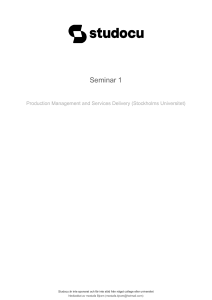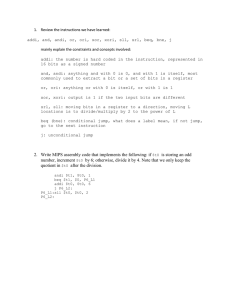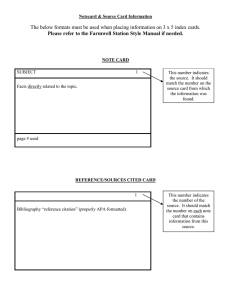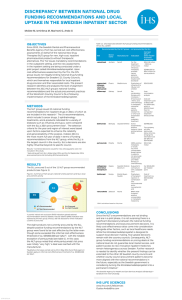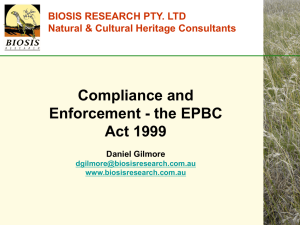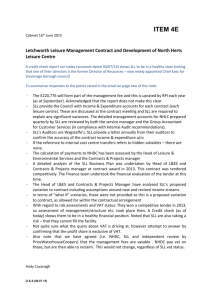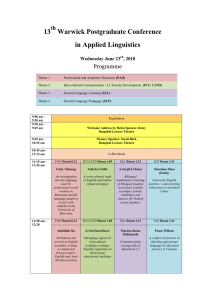– How to build your research paper database Steven L. Lee
advertisement
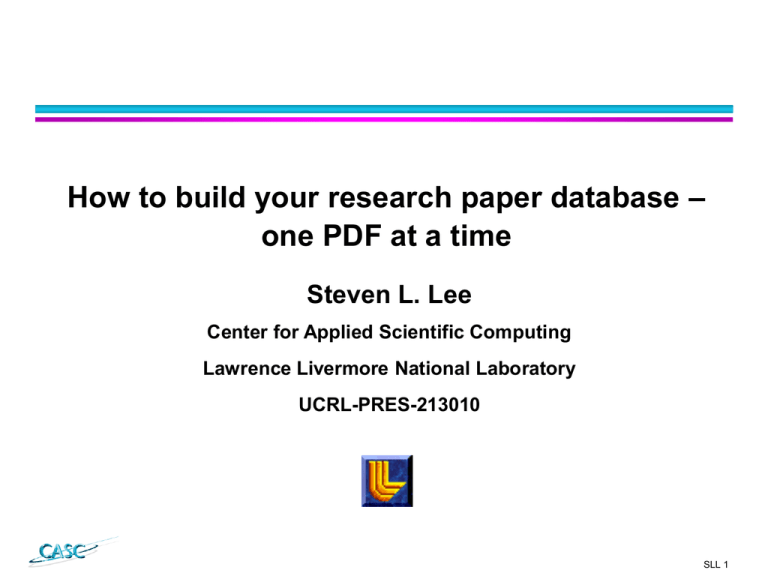
How to build your research paper database –
one PDF at a time
Steven L. Lee
Center for Applied Scientific Computing
Lawrence Livermore National Laboratory
UCRL-PRES-213010
SLL 1
Overview
Research papers important to your work: hundreds or more
Source: online journals, author websites, your own material
What ever happened to the notion of a “paperless office”?
Need a tool for quick access to titles, bibliography, article itself
Such a tool is useful when
— reading articles and developing ideas
— writing journal articles and grant proposals
The described tool creates an index to your PDF files
Based on free software: Latex, Emacs, Adobe Acrobat, ...
SLL 2
Basic layout for building the index to your PDF files
index.tex
— Each entry item you create specifies the PDF file, title of the article,
and citation
— \item \href{file:./FermatProof.pdf} {Modular elliptic curves and Fermat’s Last
Theorem}~\cite{Wiles95}
index.bib
— Each bibliography item provides the citation, author, title, etc.
— Use Entry-Types menu in Emacs for empty fill-in template
Makefile
— make index
(creates index.pdf)
— make backup (creates the backup file index.tar.gz)
— make
(displays the usage information given above)
style files (2) and journal abbreviations (acronyms.bib)
SLL 3
Additional notes on managing PDF documents
The index tool is a simple approach to organizing your research docs:
Click on a title corresponding research article appears
Click on a citation bibliographic information is presented
Other approaches are possible, of course
Within a PDF document, the search command is a useful feature
Google Desktop allows you to search your own files
For Apple users:
— BibDesk is a comparable tool, a graphical bibliography manager
— Apple Spotlight lets you search within all your PDF documents
SLL 4
Searching for research articles on the Internet
scholar.google.com
— “Modular Elliptic Curves” filetype:PDF
— Only PDF documents are displayed
www.google.com (search based on page rank)
www.vivisimo.com (folders organized based on clustering)
Use these and other search engines instead of relying only on one
SLL 5
Research article databases (subscription required)
www.webofscience.com
www.ieeeexplore.com
www.sciencedirect.com
www.cas.org/SCIFINDER/SCHOLAR
www.arxiv.org (no subscription required)
SLL 6
Remote collaboration using VNC
VNC – Virtual Network Computing
— www.realvnc.com
— Software makes it possible to view and fully interact with one
computer from any other computer on the Internet
— A valuable tool for remote collaboration
Tips
— A free edition is available, and sufficient for most purposes
— Download is available for most operating systems
— See installation instructions and FAQ for details
— Can run in interactive or view-only mode
— To determine your IP address: www.whatismyip.com
SLL 7
Other software and applications
Cygwin (www.cygwin.com)
— Unix-like shell for your Windows file system
Emacs (www.xemacs.org)
— Spell check, auto-fill mode, syntax highlighting
Virtual desktops (e.g., search for JS Pager)
— Useful for laptops with small screens
For Windows, use Alt+TAB to cycle among active applications
Firefox browser (www.mozilla.org/products/firefox)
— Tabbed browsing, block pop-up ads, scrapbook
— http://addons.mozilla.org for more extensions
SLL 8

